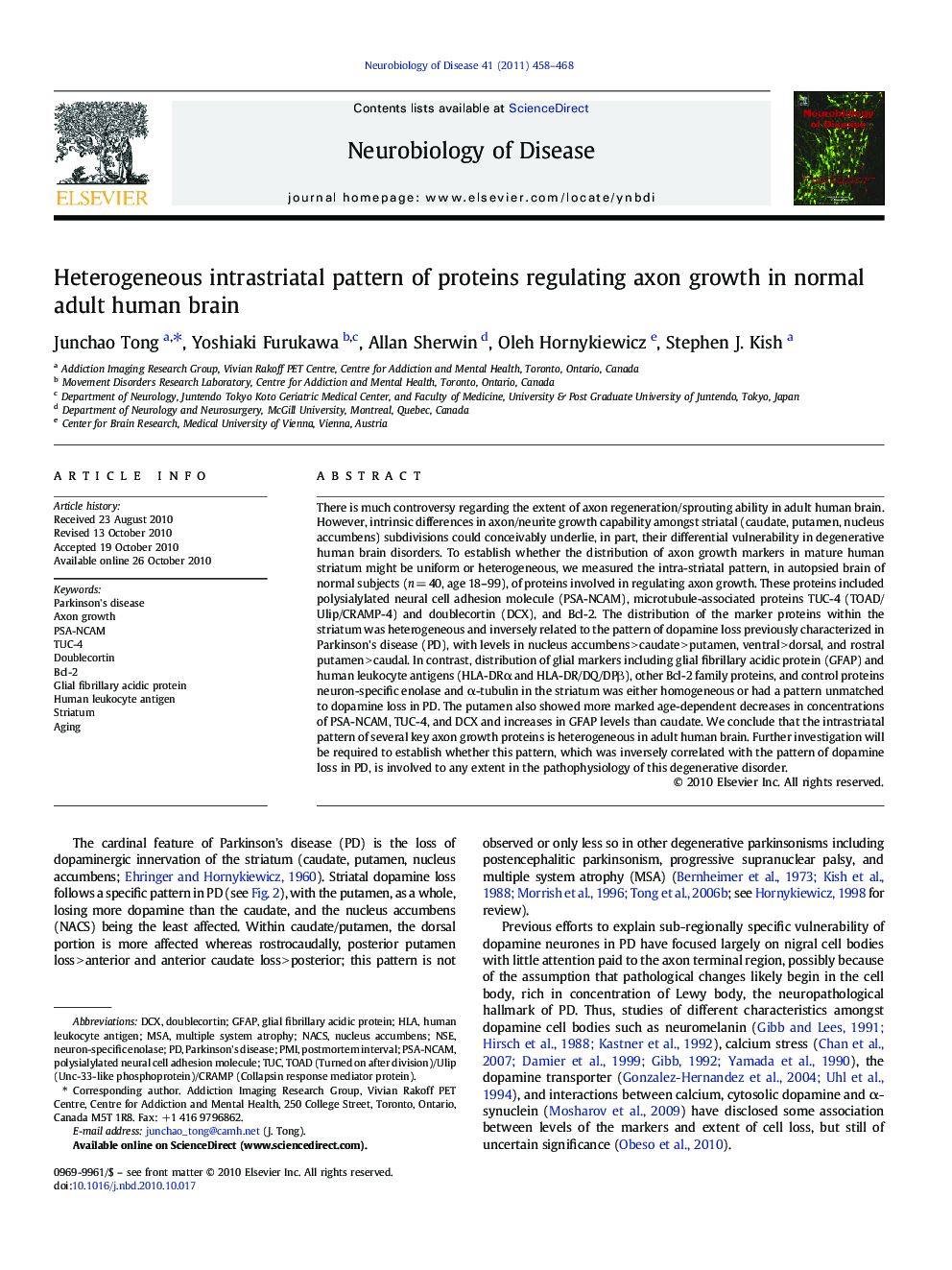| کد مقاله | کد نشریه | سال انتشار | مقاله انگلیسی | نسخه تمام متن |
|---|---|---|---|---|
| 3069609 | 1580698 | 2011 | 11 صفحه PDF | دانلود رایگان |

There is much controversy regarding the extent of axon regeneration/sprouting ability in adult human brain. However, intrinsic differences in axon/neurite growth capability amongst striatal (caudate, putamen, nucleus accumbens) subdivisions could conceivably underlie, in part, their differential vulnerability in degenerative human brain disorders. To establish whether the distribution of axon growth markers in mature human striatum might be uniform or heterogeneous, we measured the intra-striatal pattern, in autopsied brain of normal subjects (n = 40, age 18–99), of proteins involved in regulating axon growth. These proteins included polysialylated neural cell adhesion molecule (PSA-NCAM), microtubule-associated proteins TUC-4 (TOAD/Ulip/CRAMP-4) and doublecortin (DCX), and Bcl-2. The distribution of the marker proteins within the striatum was heterogeneous and inversely related to the pattern of dopamine loss previously characterized in Parkinson's disease (PD), with levels in nucleus accumbens > caudate > putamen, ventral > dorsal, and rostral putamen > caudal. In contrast, distribution of glial markers including glial fibrillary acidic protein (GFAP) and human leukocyte antigens (HLA-DRα and HLA-DR/DQ/DPβ), other Bcl-2 family proteins, and control proteins neuron-specific enolase and α-tubulin in the striatum was either homogeneous or had a pattern unmatched to dopamine loss in PD. The putamen also showed more marked age-dependent decreases in concentrations of PSA-NCAM, TUC-4, and DCX and increases in GFAP levels than caudate. We conclude that the intrastriatal pattern of several key axon growth proteins is heterogeneous in adult human brain. Further investigation will be required to establish whether this pattern, which was inversely correlated with the pattern of dopamine loss in PD, is involved to any extent in the pathophysiology of this degenerative disorder.
Research Highlights
► Striatal distribution of PSA-NCAM, TUC-4, DCX, Bcl-2 is related to PD dopamine loss
► Aging loss of PSA-NCAM, TUC-4, DCX is more severe in putamen than in caudate
► Putamen, in contrast to caudate, has marked age-related increase in levels of GFAP
Journal: Neurobiology of Disease - Volume 41, Issue 2, February 2011, Pages 458–468